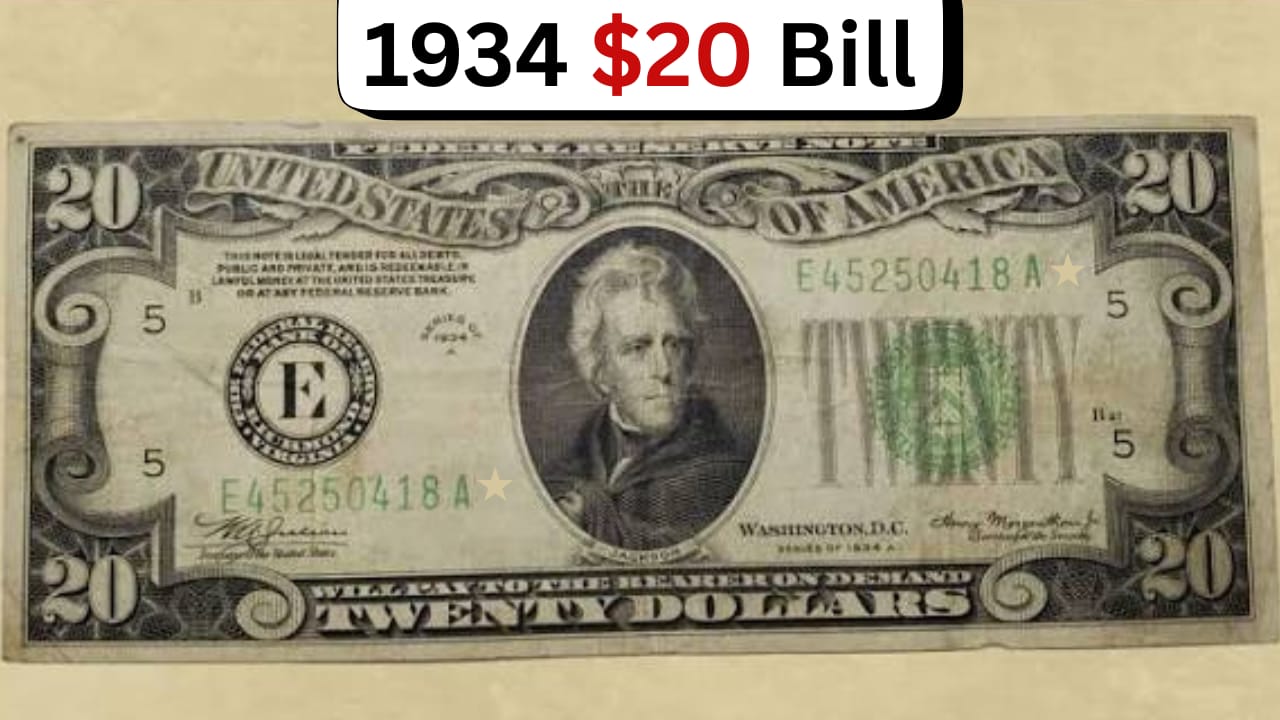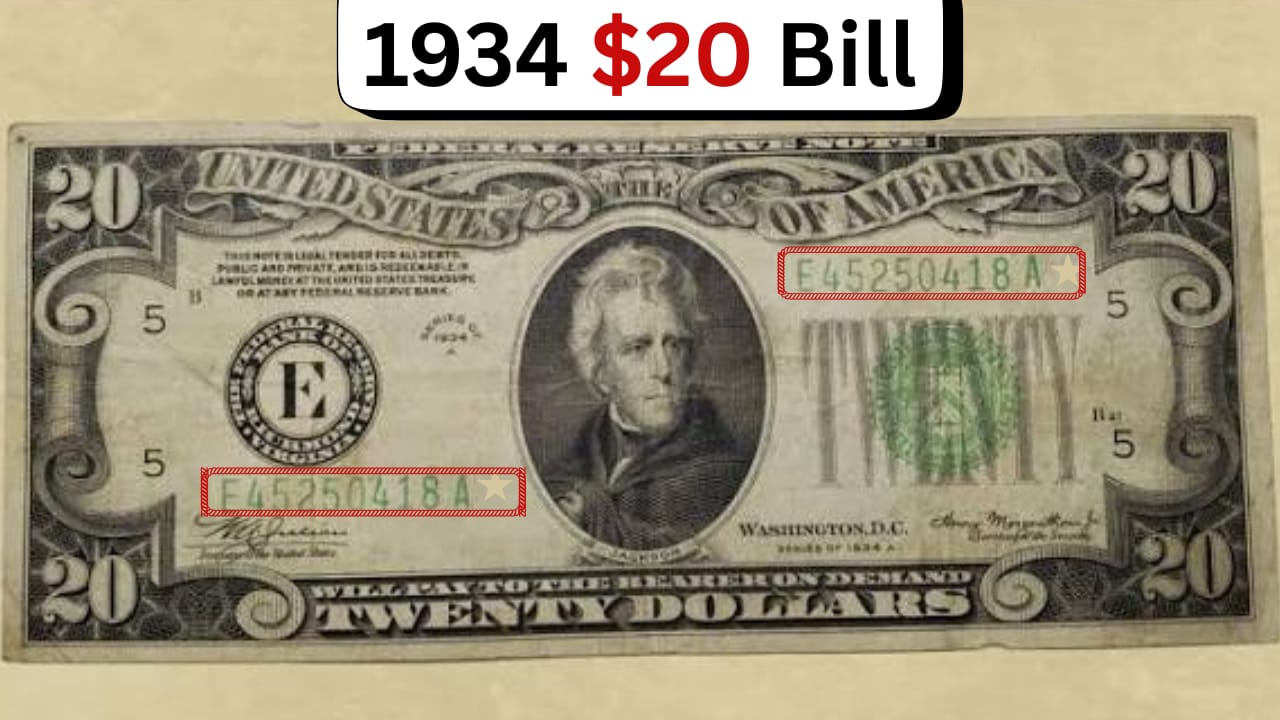1934 $20 Bill – History, Collector Value, Features & Fun Facts
Discover everything about the 1934 $20 bill – its history, key features, rare collector variations, market value, and fun facts. Complete guide for collectors and enthusiasts
Introduction
If you’ve ever searched for “20 dollar 1934,” you probably came across pictures of old U.S. bills, collector forums, and auction listings. But what makes the 1934 $20 bill so special? Is it just an old piece of paper, or does it carry stories from a pivotal moment in American history?
The 1934 $20 bill is more than currency—it’s a connection to the Great Depression, a testament to early 20th-century craftsmanship, and a favorite among collectors. Whether you’re a history enthusiast, a currency collector, or someone curious about rare money, this guide will help you understand its history, design, variations, and current market value.

The Historical Background
The year 1934 was a difficult one for the United States. The Great Depression had left millions unemployed, banks were struggling, and public confidence in money was shaky. During this period, the U.S. government printed new Federal Reserve Notes to stabilize the economy.
The $20 bill issued in 1934 was a part of this effort. Featuring Andrew Jackson, the seventh President of the United States, it was designed to be both secure and visually appealing. Today, it’s not just a historical artifact—it’s a collectible item treasured for its design, serial numbers, and rare variations.
Key Features of the 1934 $20 Bill
- Portrait: The obverse side features Andrew Jackson, a symbol of resilience and authority.
- Inscription: “Federal Reserve Note – The United States of America – Will Pay to the Bearer on Demand …” – a reminder of the era when paper money was still linked to gold.
- Seal: Typically a green Federal Reserve seal; some bills have a darker green variant.
- Series Numbers: Printed in multiple series including 1934, 1934A, 1934B, 1934C, and 1934D.
- Federal Reserve District Code: Letters A through L indicate the issuing Federal Reserve Bank, adding collectible value for certain districts.
Collector Variations
Not all 1934 $20 bills are equally valuable. Certain variations make some bills highly sought after:
- Star Notes ⭐ – Replacement notes issued when defective notes were removed. are rare and often sell at a premium.
- Mule Notes – Notes where the front and back plate numbers don’t match, creating a printing error collectors love.
- Late-Finished Back Plate (LFBP) – Some notes have unique back plate designs due to production adjustments, making them harder to find.

Market Value
The value of a 1934 $20 bill depends on its condition, rarity, and type:
- Circulated (Used): $25 – $50
- Uncirculated (Like-New): $100 – $300+
- Star Notes or Rare Variants: $300 – $1,000+
For example, a standard circulated 1934 $20 bill may sell for around $30. However, an Uncirculated Star Note, could easily fetch over $1,000 in an auction. Collectors look for crisp, clean bills free from folds, tears, or marks.
Why Collectors Value the 1934 $20 Bill
- Historical Significance: A tangible piece of the Great Depression era.
- Design: Intricate engraving and Andrew Jackson’s portrait showcase the craftsmanship of the time.
- Rarity: Star notes, mule notes, and specific Federal Reserve districts make some bills extremely scarce.
- Investment Potential: Well-preserved rare bills often increase in value over time.
Fun Facts About the 1934 $20 Bill
- The 1934 series introduced subtle design changes compared to previous issues, making it easier for collectors to distinguish series.
- Some 1934 bills contain printing errors such as inverted back plates or doubled serial numbers, highly prized in auctions.
- Many of these bills survive over 80 years later, demonstrating the quality of the paper and ink used.
- The inscription “Will Pay to the Bearer on Demand” reminds us of the era when bills could theoretically be exchanged for gold.
Tips for Collectors
- Check Condition: Circulated notes are worth less than crisp, uncirculated bills.
- Look for Variations: Star notes or rare Federal Reserve districts increase value.
- Protect Your Notes: Store in sleeves, albums, or protective holders.
- Get Professional Appraisal: Especially for uncirculated or rare notes.
Conclusion
The 1934 $20 bill is more than an old piece of currency. It’s history, art, and investment rolled into one. Collectors value it not just for its monetary worth but for the story it tells about America during a challenging economic period.
If you own a 1934 $20 bill, examining its serial number, seal, series, and condition carefully is essential. These details will help you understand its true collectible value and potential market price.

Rakesh Roy
Author at Dollar Note Lookup, sharing insights on US silver dollars, mint marks, and collector trends.
Trusted source for collectors looking for accurate, easy-to-understand information.
Related Articles
Dollar Note Lookup
Use our star note lookup tool to check dollar bill serial numbers
Star Note Rarity Guide
Understanding rarity and valuation in star note collecting
Fancy Serial Patterns
Complete guide to identifying valuable serial number patterns
1934 $20 Bill – Collector Value
Discover everything about the 1934 $20 bill – market value